The Tabo Caves were artificially excavated for monks during the harsh winters of the Himalayas. -These caverns became known as the ‘Tabo Caves’, and were primarily used as assembly halls, then as monk dwellings. Some caves near the village are used as toilets. The caves overlook the Spiti River and are home to Buddhist lamas. The caves have a smooth, unadorned structure with narrow doors and wide apertures to provide ventilation for the fires. It is a quiet cave where monks meditate in search of nirvana. These caves are the best tourist attractions in Spiti Valley.
Location
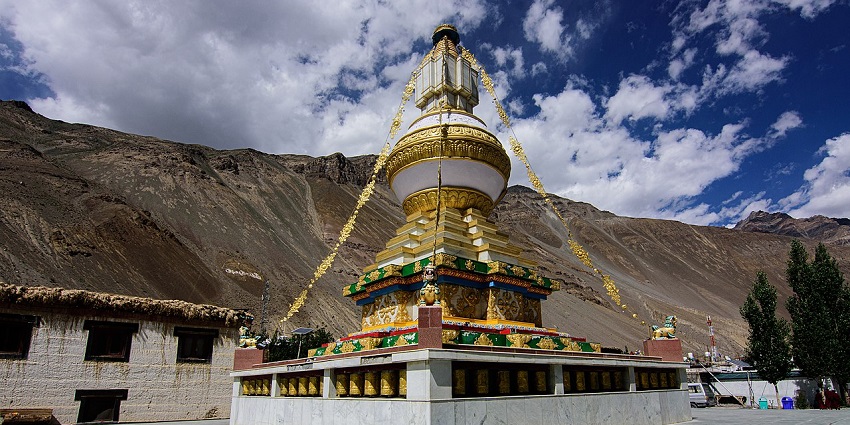
Photo: Schwiki / Wikimedia Commons
The caves are located in Tabo, Dhar Gangchhumi, Himachal Pradesh and situated just above the ancient Tabo Monastery. It can be seen from the Tabo Village, which provides a breathtaking view of the Spiti River. The caves can be reached via a half-hour trek from the Tabo monastery. These Tabo Caves represent a historical and architectural marvel, portraying the prehistoric human habitation with multi-storeyed rooms. Ancient paintings and Buddhist inscriptions are found in these caves, and one gets a panoramic view of the valley over the Spiti River.
Suggested Read: Top Places To Visit In Himachal Pradesh For Your Next Vacation
How To Reach Tabo Caves
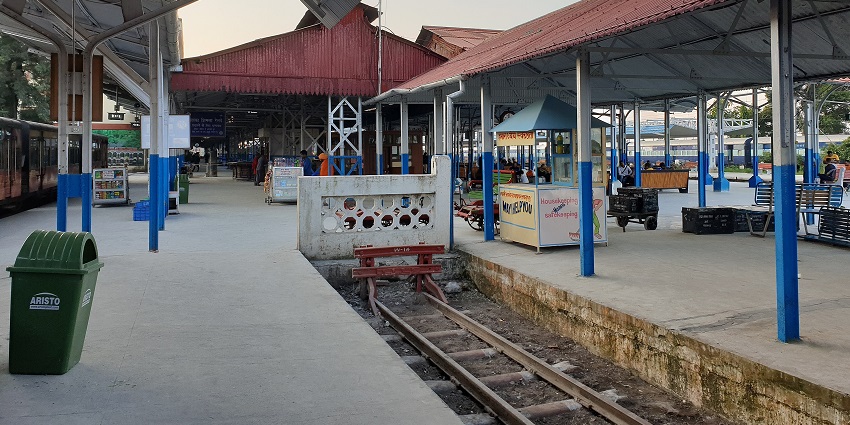
Photo: Chris j wood / Wikimedia Commons
By Road: The cave is located at a distance of 800 metres from Tabo Village and 77.2 kilometres from Himachal Pradesh. Tourists can reach by car, taxi, or bus.
By Rail: The cave is situated at a distance of 374.6 kilometres from Shimla Railway Station and 459.6 kilometres from Kalka Railway Station. Visitors can reach by car, taxi, or bus.
By Air: The cave is nestled at a distance of 394.6 kilometres from Shimla Airport. Explorers can reach by car, taxi, or bus.
Places To Visit In And Around Tabo Caves
1. Tabo Monastery
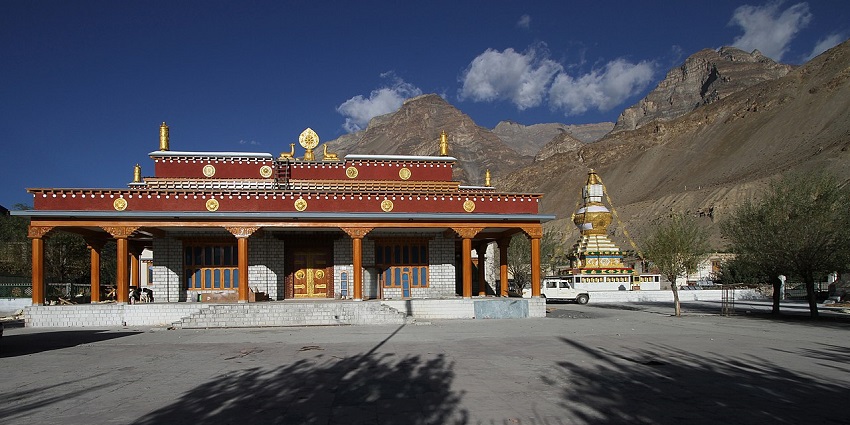
Photo: Gerd Eichmann / Wikimedia Commons
Tabo Monastery, the oldest in Spiti Valley, is an absolute timeless testimony to the valley’s rich heritage. This Tibetan monastic school was established in the year 996 AD and is often referred to as the “Ajanta of the Himalayas”; legendary for its frescoes that describe tales from Buddha’s life, along with precious ancient relics. While in their precinct, much rich town history can be gleaned from the Tabo Monastery and the temple complex within its walls. Of most interest is the Tabo Monastery mummy, which epitomises the profound spiritual heritage of the monastery.
Timings: 6 AM – 5 PM
Entry Fees: N/A
Suggested Read: Spiti Monasteries You Should Explore On Your Next Trip To Himachal Pradesh
2. Giu Mummy
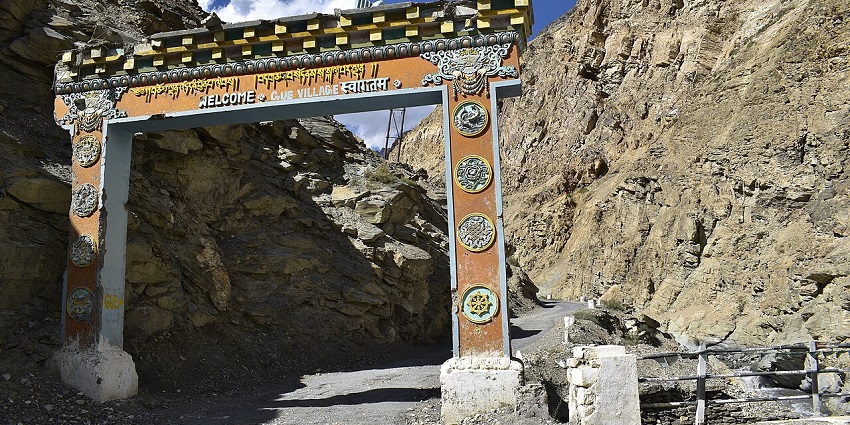
Photo: Nrr1729 / Wikimedia Commons
The most intriguing sight in Spiti must be that of a monk’s 500-year-old perfectly preserved Giu mummy. Placed in a small shrine in a tiny village, it is one of the remarkable stops for anyone interested in history and the mystique of this region. Local folklore dictates that the monk was preserved sitting in a meditated posture, and his body was still intact with all hair and nails on. The shrine for the Giu mummy is a few minutes from the main road, providing glimpses of ancient practices and traditions in this region.
Timings: 8 AM – 5 PM
Entry Fees: ₹30
3. Kee Monastery
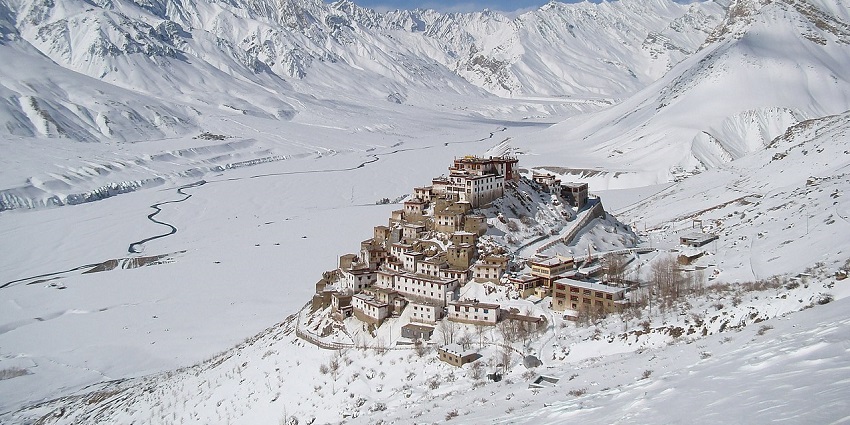
Photo: Ksuryawanshi / Wikimedia Commons
Kee Monastery is undoubtedly one of the most famous places to visit around Tabo Caves in the valley of Spiti. The centuries-old murals, thangkas, and statues warmly embrace the interiors and speak endlessly of the labyrinth of corridors and prayer halls within them. Kee Monastery is known not only as a place of worship but also as a centre for learning, where young monks stay and learn the teachings written by Buddha. Visitors can enjoy one of the best panoramic views over the Spiti River and valley.
Timings: 6 AM – 6 PM
Entry Fees: N/A
Suggested Read: Top Offbeat Places In Himachal Pradesh For Fresh Mountain Air
4. Kaza
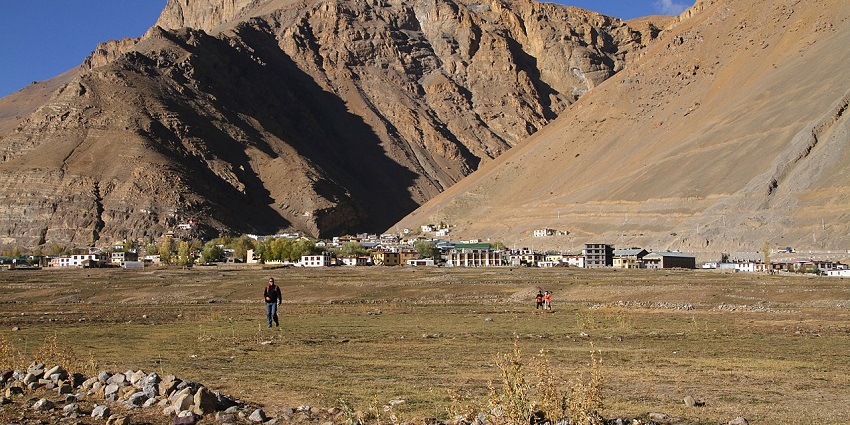
Photo: Gerd Eichmann / Wikimedia Commons
Kaza is located in the Trans-Himalayan region of India and is the largest and most developed town in the Spiti Valley of Eastern Himachal Pradesh. The road to this place often gets closed due to frequent landslides but it can be reached from Manali and Shimla. Private MUVs are recommended to visit this place and reach Kaza. It has a regular bus service from the Himachal Road Transport Corporation, connecting Kaza with Manali and Reckong Peo. Visitors can enjoy trekking and camping in the serenity of the Himalayas.
Timings: 24*7
Entry Fees: N/A
5. Pin Valley National Park
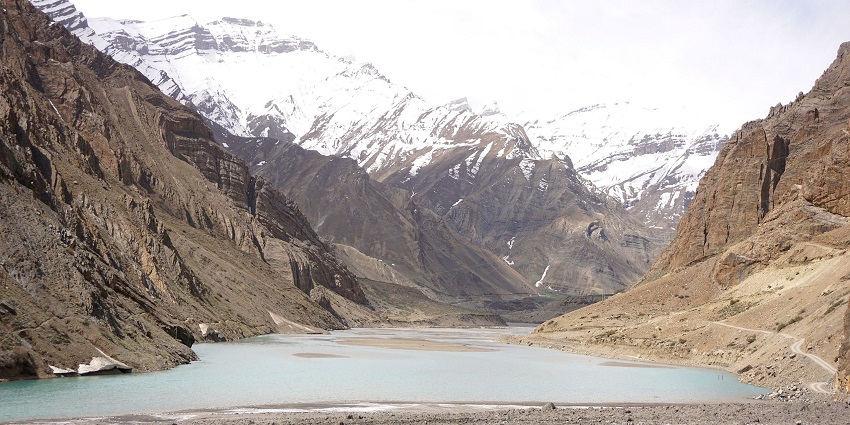
Photo: Vishrutpanday / Wikimedia Commons
Pin Valley National Park is tucked away in the chilly desert region of Spiti Valley in Himachal Pradesh. It attracts nature admirers and wildlife explorers from all over the world. The park was established in 1987 and covers an area of more than 675 square kilometres. It is renowned for its untamed terrain, sheer cliffs, and varied wildlife. This national park is home to endangered species like the Siberian ibex and snow leopard. It is popular among wildlife photographers and hikers due to its distinct high-altitude environment and abundant biodiversity.
Timings: 6 AM – 6 PM
Entry Fees: N/A
Suggested Read: Best Places To Visit In Spiti To Explore The Pristine Nature
Where To Stay

Photo: Nienke Witteveen / Unsplash / Image For Representation Only
Here is the list of places near the Tabo Caves: Kunzom Inn Tabo, Namgun Homestay, Namkha Homestay by StayApart, Hotel Zamling Donkhang, Mandang Soma Homestay, Nima Regency Homestay Tabo, and Aema Spiti Stay Inn. For a good, hassle-free experience, ensure you book in advance, consider proximity to the local attractions, dining options, and public transport, and check on travel websites or apps for current reviews.
Where To Eat

Photo: Jannis Brandt / Unsplash / Image For Representation Only
Visitors can enjoy savouring food at Cafe Himalaya Tabo, Tabo Coffee House, Tabo Heights, Cafe Kunzom Top, The Spitian Home & Cafe, Millennium Monastery Restaurant, Dewachen Retreat Restaurant, Samsara Campus & Restaurant, and DreamLand Guest House & Restaurant. Visitors can taste local Himachali flavours by indulging in regional specialities. Booking your table well in advance is advised.
Suggested Read: Visit The Spiti Valley In May To Enjoy The Rugged And Unparalleled Beauty In Himachal
Best Time To Visit In Tabo Caves
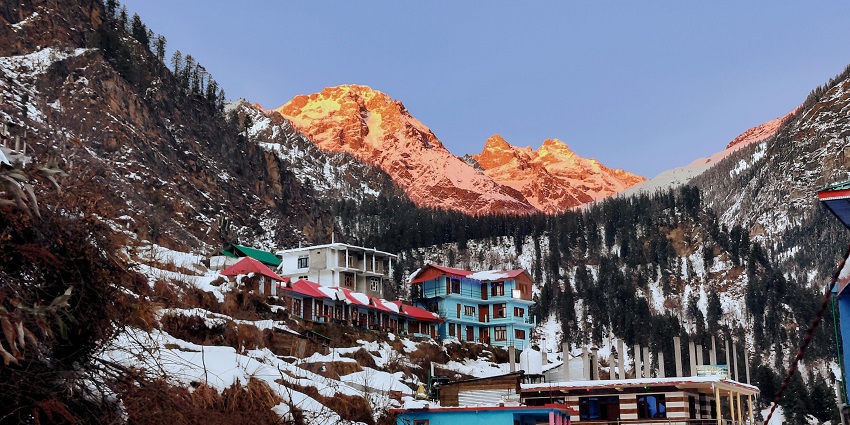
Visiting Tabo Caves is best during May to October when the weather is pleasant and clear. This is the most suitable time to explore the area around the caves.
Other Factors To Consider
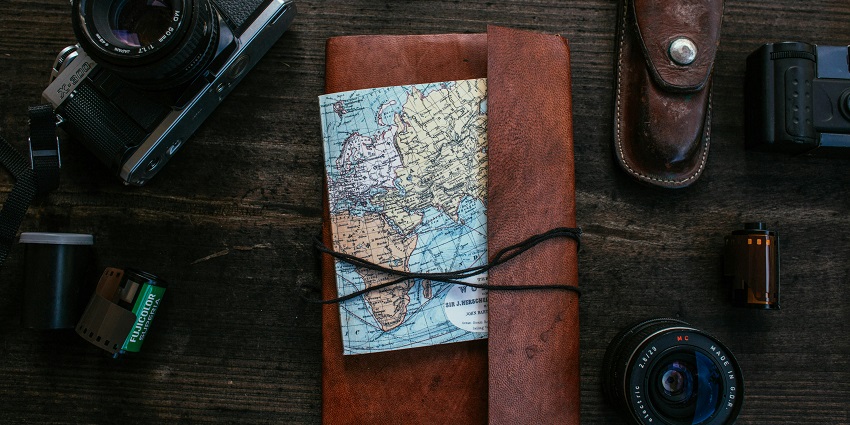
Photo: Rachel Claire / Pexels / Image For Representation Only
Average Cost Of The Trip
There is no entry fee at the Tabo Caves; however, costs may vary depending on other facilities. It can range from ₹5000 to ₹10,000.
Tips For The Travellers
- The best time to visit is in the morning, as one can avoid the crowds and truly grasp the spiritual importance of Tabo Caves.
- Comfortable shoes will help while hiking up to the location of the caves since sometimes the path could be steep.
- Take along jackets and other such warm clothes and layers as the temperature in the village often changes suddenly.
- There are barely any facilities around the place of attraction, so it’s better to carry water and some light refreshments along.
- Respect local customs; do not make noise in the vicinity of the caves.
- Taking photographs is permitted; however, take pictures respectfully without disturbing others.
- Check road conditions before your visit, as weather may affect access to Tabo Village.
- Take a basic first-aid kit with you, as the medical facilities are some distance from the village.
Suggested Read: Explore The Majestic Forts In Himachal Pradesh To Relive The History Again
The Tabo Caves date back to the 10th century and are famous for their excellent murals and carvings, which reflect early Tibetan Buddhist art. They were also called the “Ajanta of the Himalayas” because of the rich collection of murals inside them and the history of being a famous centre of learning related to Buddhism. Plan a trip with TripXL and get a chance to enjoy this beautiful location.
Cover Photo: Manish Pathak / Wikimedia Commons / Image For Representation Only


 WhatsApp
WhatsApp
 Twitter
Twitter









